Seagrass meadows are reliable fishing grounds for food
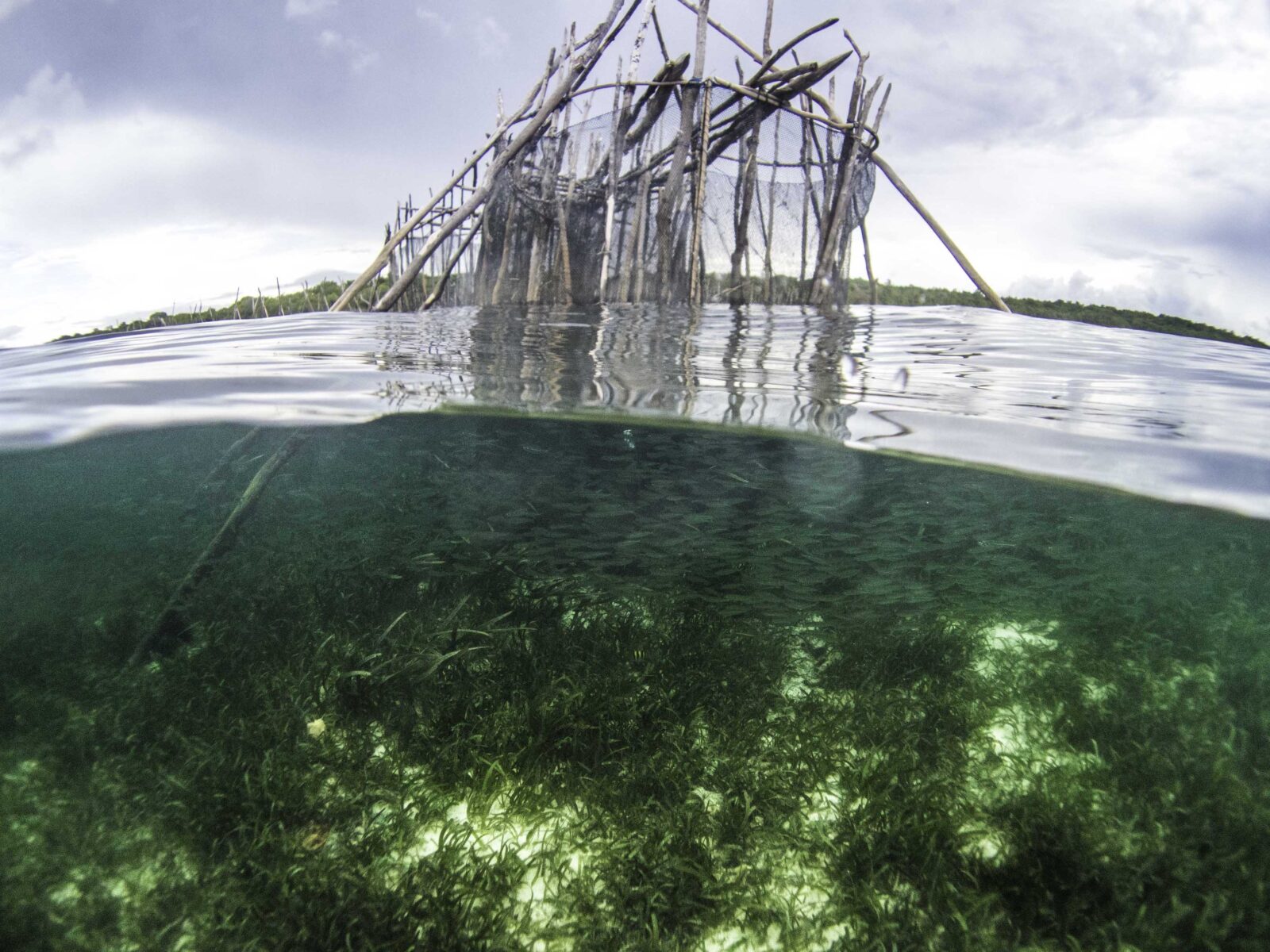
A new study shows that seagrass fisheries provide a reliable safety-net for poor fishermen, since they perceive those habitats to maintain large fish catches over time. Surprisingly, even more so than coral reef fisheries, which people normally associate with small-scale fishery. Seagrass meadows are routinely used as a fishing habitat across the Indo-Pacific region to sustain millions of households by providing fish and other animals for food and income from fishing. A new study in Ocean and Coastal Management investigated how and why households use seagrass meadows across Cambodia, Tanzania, Sri Lanka and Indonesia in the Indo-Pacific region by conducting interviews that asked what habitats they used and which they preferred. Benjamin Jones, director of Project Seagrass and PhD student at the Department of Ecology Environment and Plant Sciences, Stockholm University, says: “Seagrass was the most common habitat used for fishing. Nearly half of all households we talked to preferred fishing in seagrass over other habitats such as coral, mangroves, open ocean, mud and rock for example. This was surprising because most people think of reef fisheries as the key tropical small-scale fishery, but we show that its actually engagement in seagrass fisheries that are much more characteristic of households.” When the researchers asked the fishermen why they preferred seagrass, they expressed a general feeling of reliability: seagrass meadows always provide large catches and fish and invertebrates are always found there. This is likely due to the ecological role that seagrass meadows play for fish. They provide valuable nursery habitats with lots of places for fish to hide and grow which means that there is often a high abundance of fish present. The study also revealed that 3 in 20 people across the region were reliant on seagrass meadows as their fishing ground and did not fish anywhere else. The research from households in 147 villages also revealed that reliance on seagrass meadows was strongly influenced by household income: “Household income had two different effects. On one hand, poorer households were less likely to own motorboats. These were reliant on seagrass as they were unable to fish elsewhere, seagrass is close to shore and easy to access without a motor. On the other hand, wealthier households were more likely to own certain types of fishing gear that incentivized them to use seagrass due to high rewards and low effort requirements. These were static fishing fences that don’t require a fisherman to be present” says Benjamin Jones. Study co-author and fellow Project Seagrass director Leanne Cullen-Unsworth, says “Our results highlight the need for empirical household scale data for management of seagrass meadows. People use and value seagrass for many different reasons so safeguarding seagrass is vital to ensure that all people, all of the time, have equitable and equal access to the resources seagrass provides.” The study was a collaboration between scientists from Stockholm University, Project Seagrass, Swansea University, Uppsala University, Hasanuddin University, among others. Open Access paper: Jones, B.L.H.; Unsworth, R.K.F.; Nordlund, L.M.; Eklöf, J.S.; Ambo-Rappe, R.; Carly, F.; Jiddawi, N.S.; La Nafie, Y.A.; Udagedara, S.; Cullen-Unsworth, L.C. Dependence on seagrass fisheries governed by household income and adaptive capacity. Ocean & Coastal Management 2022, 225, doi:10.1016/j.ocecoaman.2022.106247.
Mosquito nets: Are they catching more fishes than insects?
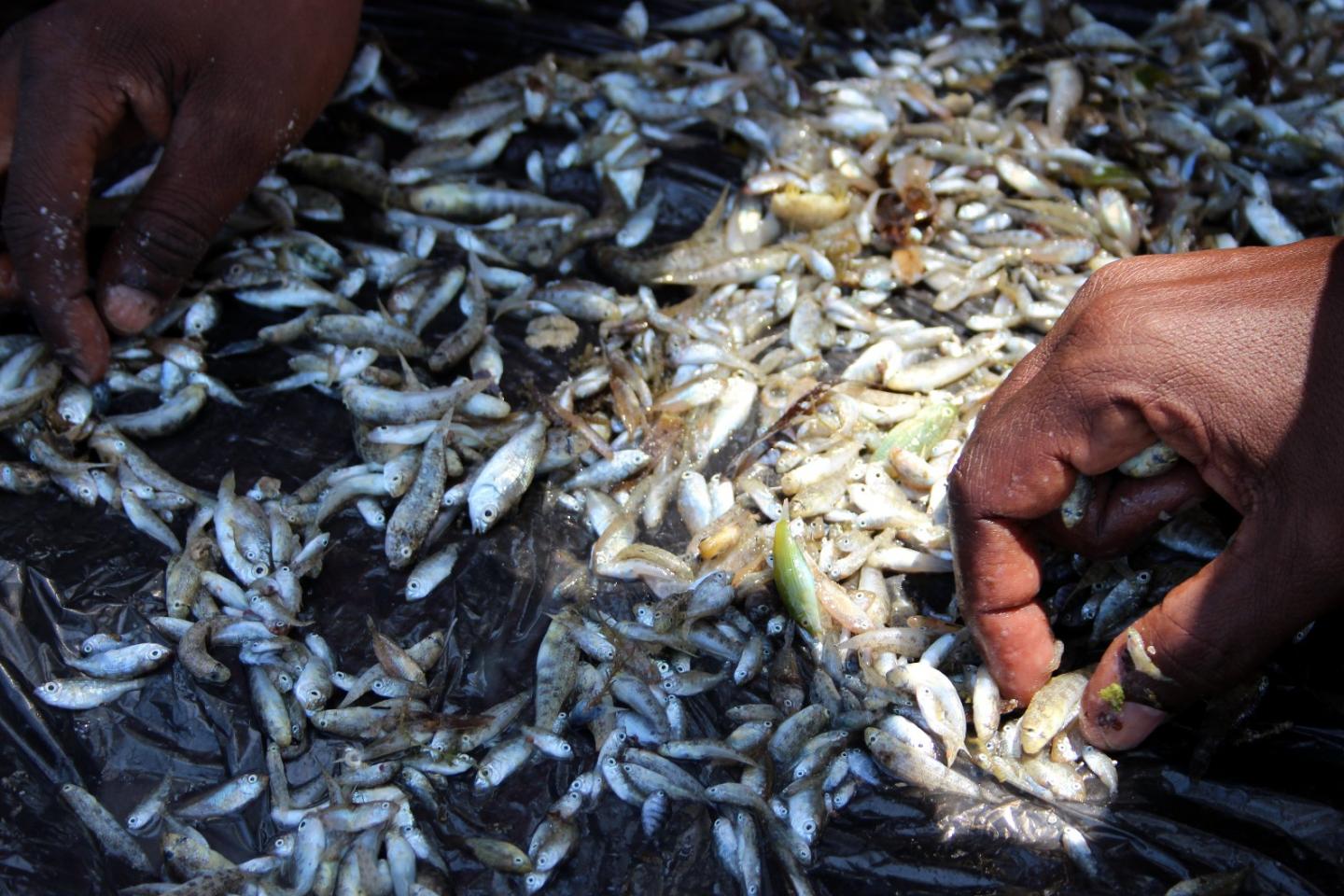
Mosquito nets designed to prevent malaria transmission are used for fishing which may devastate tropical coastal ecosystems, according to a new scientific study. The researchers found that most of the fish caught using mosquito nets were smaller than a finger and potentially collect hundreds of individuals. Malaria is a serious global health issue, killing nearly half a million people every year worldwide. Aid organisations like the Bill and Melinda Gates Foundation have invested in solutions to solve the crisis such as distributing hundreds of thousands of bed nets to protect people from mosquito bites carrying the virus. “Distributed mosquito nets are intended to be used for malaria protection, yet communities living in poverty use them for fishing, providing fresh concerns for already overfished coastal ecosystems, says,” Benjamin Jones, a director of Project Seagrass and PhD researcher at Stockholm University Department of Ecology, Environment and Plant Sciences. There are few studies that investigate how much fish mosquito-net fishing potentially harvests, although the use of mosquito nets for fishing is not a new phenomenon: “No evidence on the sheer amount of fish that these fisheries extract has been published that we are aware of. Gaining an understanding of these catches is vital if we are to manage such fisheries,” says Benjamin Jones. In Mozambique, each sweep of the mosquito net caught more than half of the average daily catch (2.4 kg a day) using traditional nets, by weight. But many of the fishes were very small, which means mosquito net fishers who cast their nets many times each day are removing a huge number juvenile fish to eat. Many of the species caught are important for food in the region when adults or help keep the seagrass ecosystems where they are found healthy. “The use of mosquito nets for fishing may contribute to less food availability, greater poverty and the loss of ecosystem functioning,” concludes Dr Richard Unsworth, a co-author and Lecturer in Marine Biology at Swansea University. Finding a solution to the problem is incredibly hard, but the researchers suggest the need for marine scientists, social scientists, health professionals and fishing communities to all work together. Laws imposed from governments make the use of mosquito nets for fishing illegal in some localities, however, such mechanisms are evidently insufficient because people still need food and “need re-thinking” according to the study. “We need to know why communities aren’t using these nets for intended use, and therefore we have to involve them, so they can be part of developing solutions to these challenges,” says Richard Unsworth. The team collected data at seagrass meadows by ten coastal villages in northern Mozambique. Identifying each fish species, the researchers recorded the weight of each fish group and the total catch, as well as age and where they are positioned in the food web. The open access paper – “The perverse fisheries consequences of mosquito net malaria prophylaxis in East Africa” – is published on Monday 11th November at https://doi.org/10.1007/s13280-019-01280-0
Global fisheries threatened by loss of seagrass
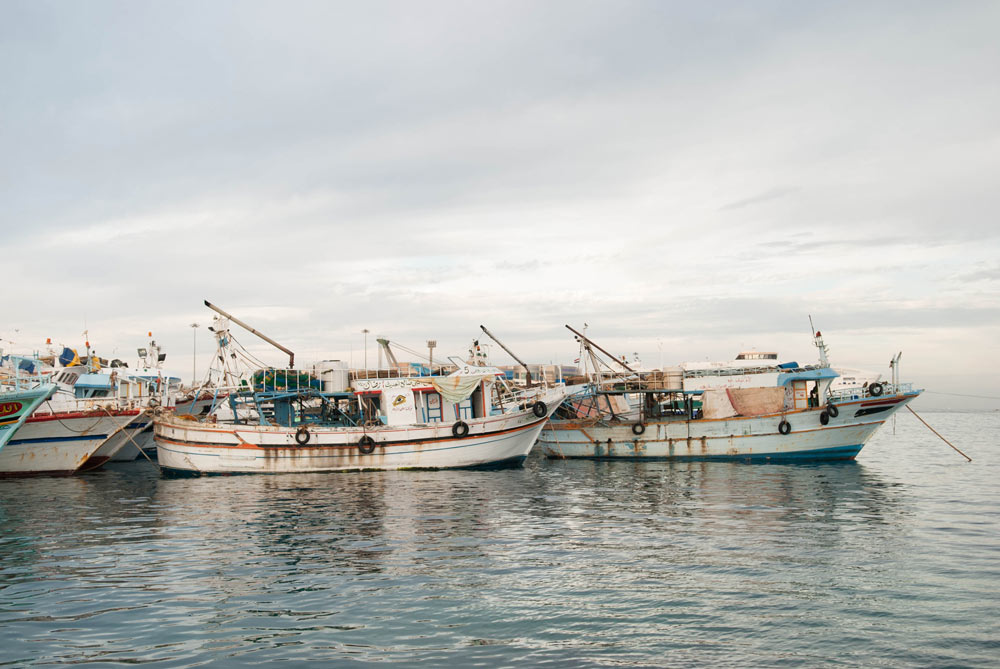
Seafood consumption is both a love and a necessity for hundreds of millions of people all across the world. And the supply of seafood is a key part of maintaining food security for the whole planet. But as demand for seafood is increasing, stocks of wild fish and invertebrates (such as mussels and prawns) are declining. A major problem is that policies and plans designed to ensure the sustainability of our fisheries almost exclusively target fishing activity. But we also need to protect the critical habitats that these fisheries also depend on. Most species that are fished require more than one habitat to complete their lifecycles. For example Atlantic cod (Gadus morhua) spends its adult life shoaling in deep water, but juveniles require more stable habitat where they can hide such as seagrass meadows. So, if we want to manage stocks for sustainability, it is essential to protect the supporting habitats of targeted species. Seagrass meadows are a critical habitat supporting biodiversity and in turn the productivity of the world’s fisheries. Seagrass meadows are not only suitable for juvenile fish but also for larger fish of different species. As seagrass meadows occur in shallow, clear waters, they are an easily exploitable fishing habitat. Today, we published the first quantitative global evidence on the significant roles that seagrasses play in world fisheries . Seagrass as nursery grounds: provide a safer, less exposed, environment for eggs to be laid and young animals to find food and protection from predators as they grow. This includes commercial species such as tiger prawns, conch, Atlantic cod and white spotted spinefoot. In fact, one-fifth of the world’s most landed fish — including Atlantic Cod and Walleye Pollock benefit from the persistence of extensive seagrass meadows. Seagrass as a fishing area: it is not just large scale fishing industries that benefit from the presence of seagrass meadows. They are an easily accessible fishing ground used by small scale artisanal and subsistence fisheries around the world. Seagrass gleaning: seagrass is also essential habitat for gleaning activity, fishing for invertebrates such as sea cucumbers in water that is shallow enough to walk in. This is often done by women and children, and provides a source of essential protein and income for some of the most vulnerable people in tropical coastal communities. It is a common and increasingly visible activity, but it is not usually included in fishery statistics and rarely considered in resource management strategies. Seagrass supports other fisheries: seagrass also provides trophic support to other fisheries. They do this by creating expansive areas rich in fauna, from which there are vast quantities of living material, organic matter and associated animal biomass that supports other fisheries. Seagrasses also promote the health of connected habitats (like coral reefs), and have the capacity to support whole food webs in deep sea fisheries. Threats to seagrass, fisheries and food security: the coastal distribution of seagrass means that it is vulnerable to a multitude of land and sea derived threats. These include land runoff, coastal development, boating activity and trawling. On a global scale, seagrass is rapidly declining and when seagrass is lost associated fisheries and their stocks are likely to become compromised with profound and negative economic consequences. Seagrass meadows support global fisheries production Pdf Supporting policy and action is needed now! The importance of seagrass meadows for fisheries productivity and hence food security is not reflected by the policies currently in place. Urgent action is needed if we want to continue enjoying the benefits that healthy and productive seagrass meadows provide. Fisheries management must be broadened from just targeting fishing activity to also targeting the habitats on which fisheries depend. Awareness of the role of seagrass in global fisheries production, and associated food security, must be central to policy, and major manageable threats to seagrass, such as declining water quality, must be dealt with. Action is urgently needed to protect the worlds seagrass meadows if we are to continue to enjoy the benefits they provide.
Waste Not, Want Not. Discards that could feed those in poverty
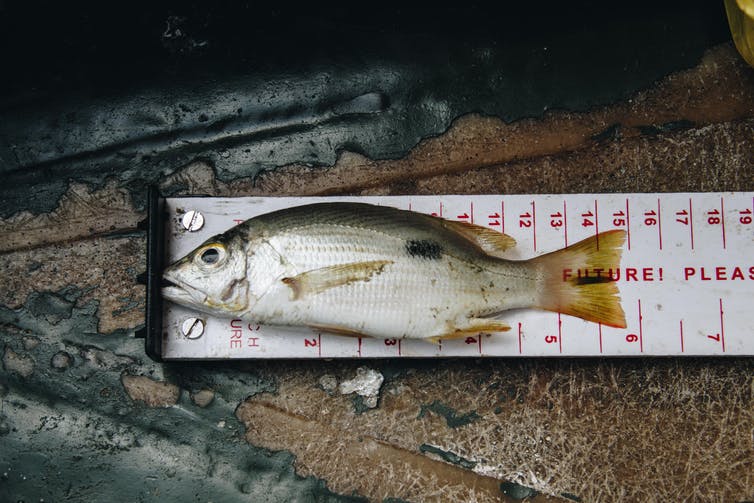
At least 7.3m tons of fish (usually dead or dying) are thought to be discarded each year from marine fisheries around the world. But these estimates come mostly from observations of large-scale industrial fisheries. Limited attention has been paid to small-scale fisheries, which are assumed to have low discard rates – some estimate as little as 3.7% total catch, compared to more than 60% for some large-scale shrimp trawlers. Small-scale or artisanal fisheries – for which there is no universal definition – are generally considered more sustainable than their large-scale industrial counterparts, but there is increasing evidence that shows this is not always the case. They employ more than 99% of the world’s 51m fishers and likely account for more than half of the total global fisheries catches. A Sri Lankan fisherman. One of the biggest problems for both large and small-scale fisheries around the globe is bycatch – fish and other marine organisms caught when the fishers are targeting something else. Powerful images of turtles and dolphins caught in fishing gear have caught the sympathy of the general public, but unintentional landings of fish aren’t as evocative. The truth is, however, that fish bycatch is a big issue. Progress is being made in Europe within large-scale fisheries thanks to campaigns such as the Fish Fight. But small-scale fisheries – though there is increasing recognition outside that they are “too big to ignore” – are only just beginning to recognise the fish bycatch and discard problem. Catch and bycatch. Our newly published research has found that artisanal fisheries in Sri Lanka are throwing away more marine species than they keep. For every fishing trip in one of Sri Lanka’s largest lagoons, Puttalam Lagoon, fishermen could be throwing away more than 50 fish. What’s more, of the 62 species recorded in the survey, more than 80% were routinely discarded. The reasons for this practice are unclear but sometimes it is because the individual fish are too small – or they are species without a high market value. We found that fishers targeting shrimp in particular caught more non-target species and had higher discards than those targeting fish. This is particularly worrying at a time when Sri Lankan shrimp exports are increasing, after the EU granted the country improved access to its market. Fishers in Puttalam Lagoon discard non-target catch onshore. Potentially 90% of the world’s fish stocks are threatened by over-fishing – when more fish are caught than the population can replace. And the “tell-tale” signs of over-fishing are now being observed in Sri Lanka and across other research sites in the Indo-Pacific region. Fishers in these locations have told us and other researchers that they are catching much less fish than they were five years ago. But this is not just an ecological issue, it is a social one too. In this era of increasing food insecurity, our findings highlight a serious concern for Sri Lanka. This unwanted seafood could be used to provide protein for the poorest in society. Instead, we found that fish with high nutritional value is being eaten by feral dogs and birds. Unwanted fish end up as quick and easy meals for animals. Billions of people worldwide rely daily on fish for protein, while 50m people also rely on catching fish for work. But, if the levels of bycatch and discard continue, the livelihoods and food security of the people that depend on these fisheries will be under threat. If the problem is not managed, there won’t be any fish left in the waters. There is one ray of hope for Sri Lanka, however. There are some small-scale fishery cooperatives which maximise long-term community benefits by dealing with the threats of fisheries mismanagement, livelihood insecurity and poverty. Communities with successful and inclusive cooperatives are better off than those without. Cooperatives have the potential to empower small-scale fishers against environmental and socioeconomic shocks, but the problem in Puttalam Lagoon is that these cooperatives are not operating across all levels of society. Fishing cooperatives do exist, but there could be more. If the bycatch and discards issue is going to be solved over the long-term, we need to look at combining sustainable management practices with community schemes to reduce unnecessary seafood waste all over the world. Together the millions of small-scale fishers all over the world have an immense amount of power, they just need to realise it. This article was originally published on The Conversation. Read the original article.
Seagrass meadows key fishing ground globally
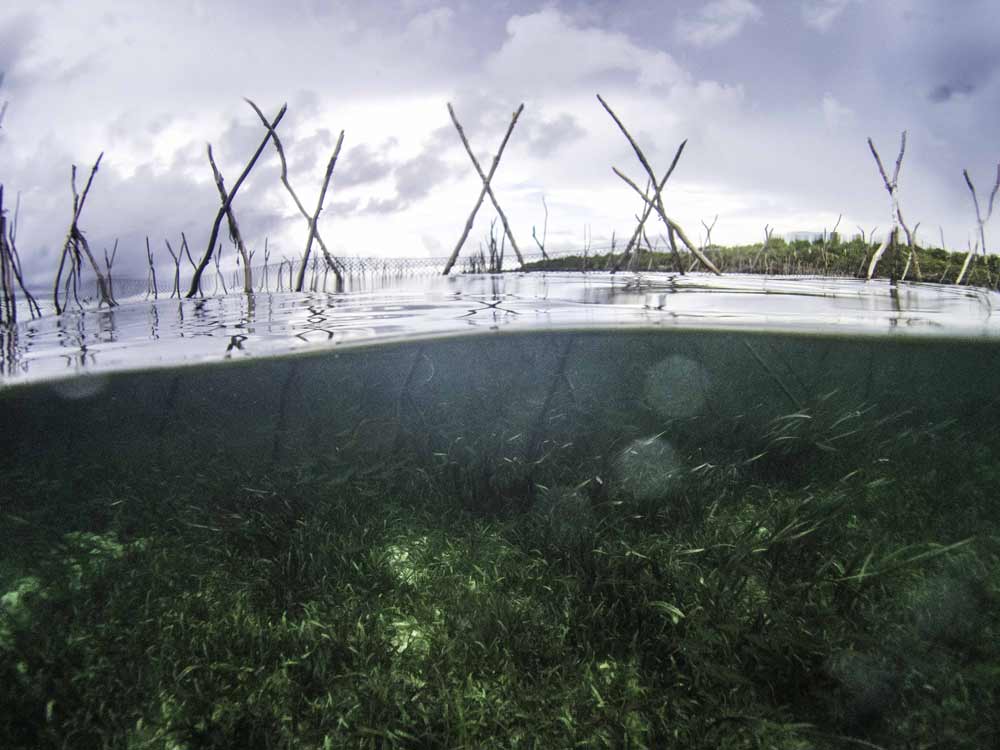
Fishing in seagrass occurs around the globe; if there is seagrass (and people) there is fishing. Still, the nature and extent of fisheries in seagrass is poorly understood. It is a prerequisite for natural resource management to understand resource exploitation, therefore we decided to investigate this further. Seagrasses are plants that grow in the shallow ocean. The seagrass attracts many different types of animals, to live, forage, or seek shelter. These animals are collected by humans for subsistence (food), commercial and recreational purposes. Across the globe the reasons for fishing differs, it is more common to fish for recreational purposes in countries where the economic situation is better, while in countries with more challenged economies fishing for subsistence is very important. Interestingly, because seagrasses grow in nearshore environments, almost all types of fishing gears are used. Close to shore in many areas of the world the seagrass gets exposed during spring low tides making it possible to walk in the seagrass meadows. Many people take advantage of the low tide and walk across the seagrass meadows collecting invertebrates, such as mussels and sea cucumbers, often with bare hand or simple fishing gear like sticks. This type of fishery is commonly referred to as gleaning or invertebrate harvesting and is conducted by men, women and children. Gleaning is especially common and important for people with limited resources. Static nets are also used in the intertidal zone, the area where the tides raise and fall, catching fish when the tides come in. It is very common to use hook and line and fishing nets in seagrass. Unfortunately, very destructive fishing gears such as bottom trawls, poison, dynamite, and rakes are also occasionally used. Women and children walk across seagrass meadows at low tide in indonesia collecting resources that they can eat (Photo: Benjamin Jones) On a global scale, anything found in the seagrass that can be eaten, sold, used as bait or sold as a curio is targeted. Globally, the most commonly targeted invertebrates in seagrass appear to be crabs and bivalves (mussels). The most commonly exploited finfish from seagrass are mullet, herring, and snapper. The target species varies greatly across the globe, for example in areas with high biodiversity (many types of species), the number of target species is often higher than in areas with low biodiversity. This pattern often corresponds with colder water fewer species, warmer water more species. Species groups that are least commonly targeted are sea cucumbers, small fish for drying, aquarium trade species, seahorses, and sharks. People access the seagrass fishing grounds by walking, swimming, snorkelling, free diving, use of canoes, scuba diving, use of sailboats and motorboats. Crabs and bivalves appear to be the most commonly targeted invertebrates across the globe (Photo: Benjamin Jones) Seagrass meadows receive limited management attention compared to other nearshore marine habitats. Fisheries management does not yet target seagrass. But seagrass fisheries are diverse and important to people the world over. We, authors, hope that these findings, now systematically and scientifically investigated, will highlight the importance of seagrass for fisheries around the globe. Source: ‘Global significance of seagrass fishery activity’ by Lina Mtwana Nordlund, Richard K.F. Unsworth, Martin Gullström, Leanne C. Cullen-Unsworth. Published in Fish & Fisheries 2017. Arial footage of a nearshore environment with patchy seagrass, in the upper left corner there is a fishing boat and along the right edge there is a long fishing net deployed (blue in color), Tanzania. Drone pilot and photo LM Nordlund.
A Glimmer of Hope for Seagrass in the Wakatobi National Park?
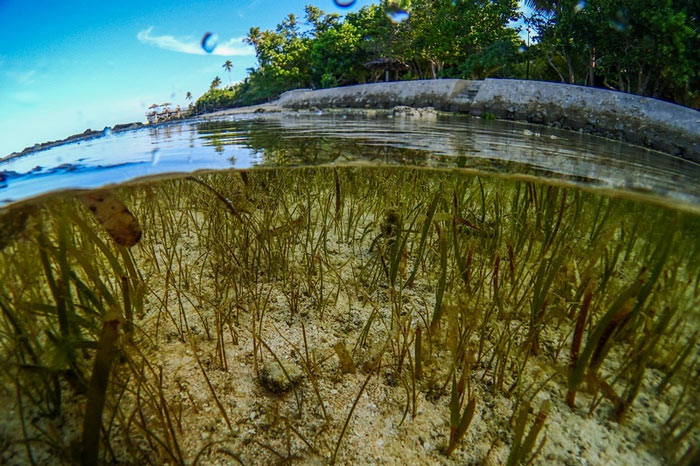
Back in December 2015 I spent a couple of weeks in the Wakatobi, Indonesia, initiating phase II of the Wakatobi Seagrass Program. This seeks to build on work carried out though a previous project “Recognising the role of seagrass meadows in food security: re-prioritising the marine conservation agenda” (2011-2014), which was conducted in the same location. That project evidenced the direct economic value and food security potential of seagrass meadows and prompted local government and community stakeholders to place seagrass on their conservation agendas for the first time. The Wakatobi project demonstrated how seagrass associated species provide an essential source of protein and income to the vast majority of people in the region. We provided evidence of the links between seagrass and food security and highlighted that these currently expansive ecosystems remain largely ignored within formal legal or environmental management frameworks, even within an MPA at the heart of the Coral Triangle. Seagrass meadows provide an essential source of protein and income to the vast majority of people in the region. The outputs from the first project are being used to drive forward discussions between local stakeholders to bring about change. And although their value is somewhat recognised in the Wakatobi, these expansive ecosystems are threatened by a myriad of anthropogenic activities. The host of threats at play within the Wakatobi range from mangrove destruction to overfishing and aren’t going to disappear overnight. Phase II of the Wakatobi Seagrass Program seeks to work on these threats through local, community level action, and devising strategies to work with formed the basis of my trip. Seagrass meadows across the Wakatobi are threatened by a host of factors. Overfishing has left many meadows lifeless. As communications developed with our local partner, FORKANI, it seemed clear that one of the issues they felt was dominant, was the issue of run-off. Terrestrial run-off causes huge problems for seagrass through both sedimentation and eutrophication, and as the destruction of mangroves (15% of mangrove forest has been destroyed by local community members seeking firewood and construction materials) and forest areas continues, the ability for land to absorb and store water lessens. Given this, FORKANI proposed an exciting idea to rehabilitate both mangrove and forest areas around rivers in 3 key villages, not only to reduce impact on seagrass but to improve the continually worsening problem of water storage on the island of Kaledupa. However, with so much forest now converted to palm plantations, choosing areas to rehabilitate wasn’t going to be an easy task, and choosing areas that were key was even harder. FORKANI were amazingly resourceful when it came to the practicalities of choosing locations, mapping each river in a way that made it easy to pin point areas that needed the most work. Sometimes working the old fashioned was has its perks, and the relative ease in which they categorised each river was efficient and effective. FORKANI have now chosen areas to rehabilitate and are currently working on preparing the areas and seedlings, while also beginning to monitor seagrass in front of each village to track their own progress. Conducting river mapping was efficient and effective and allowed FORKANI to choose key areas for rehabilitation Even though discussions were productive, overfishing is still the “elephant in the room” that nobody wants to talk about. Although dynamite and cyanide fishing are now almost absent across the national park, at least that’s what we’re told, the unsustainable removal of juvenile fish is still a widespread issue. Fish fences, or “sero” as they are locally called, are one of the biggest issues facing the Wakatobi National Park and tentative UNESCO World Heritage Site. These fish fences, scar’s upon the face of the park’s beauty, fish 24/7 and, as we’ve discovered, are not only restricted to seagrass meadows. Fish fences have left both reefs and seagrasses looking like barren wastelands. Fishing 24/7. The Sero are non selective and never stop fishing Tackling the overfishing problem will take time, but by tapping into the past, we can begin to improve the future of the Wakatobi’s coastal fisheries. For centuries, isolated communities across the globe have respected a delicate balance with the ocean — taking fish only from certain areas, of certain sizes and with specific methods to maintain a healthy ecosystem and supply of fish for present and future. Now, with two key fishing villages keen to work on adopting community managed no-take areas there is some serious hope for the future. This solution, which builds on and adapts successful fisheries management techniques, provides a win-win for coupled socio-ecological systems, protecting fishers wellbeing as well as the health of marine ecosystems. Systems like this, that are well-managed, result in more fish — and not just by a few. By adopting this formula, and continually managing their fishery, communities can expect to see a potential increase of up to 56 percent in fish abundance and a potential increase in yield of up to 40%. In 2006, then Indonesian President Susilo Bambang Yudhoyono made a hugely ambitious promise to conserve a “global epicentre of marine life abundance and diversity”, stating that Indonesia would preserve 10 million hectares of ocean lying in the Coral Triangle. In 2009, he doubled this commitment to 20 million hectares by 2020. The the 1.39 million hectare Wakatobi National Park contributes to the 16.6 million hectares already protected – but given the status of seagrasses and the vast overfishing problem, serious questions about the meaning ‘protected’ arise. Is the Wakatobi destined to become a site of World Heritage value or just a wasteland? The Wakatobi’s communities are centre to answering this question. Although their sense of ownership always has been present, with these proposed mitigation measures being taken a little more seriously by communities, its clear that with a little motivation the people of Kaledupa can be tremendously proactive. This gives us a glimmer of hope for seagrass in this dynamic region of the world. The future of the Wakatobi is dependent on its communities, yet the
Starting the Seagrass and Dugong fightback

The Dugong (Dugong dugon) is IUCN Red listed as Vulnerable, in many of the 46 range states that contain Dugong its status is a lot worse. Historic hunting, loss of its seagrass habitat and the impacts of by-catch have been the primary causes of its decline. Back in 2007 the Secretariat of the Convention on Migratory Species (to which Dugong is one) negotiated the signing of a Memorandum of Understanding on the Conservation and Management of Dugongs and their Habitats throughout their Range (Dugong MoU) between 7 of these 46 countries. The aim of which was to promote internationally coordinated actions to ensure the long-term survival of dugongs and their seagrass habitats throughout their extensive range. Since 2007, the Secretariat of the Convention on Migratory Species (CMS) has managed to persuade a total of 26 states to sign up to this MoU and hopes to expand this further with the intention of protecting this wonderful species and its important seagrass habitat. A major spin off from this MoU has been the development of a Global Environment Facility funded project that aims to support the implementation of this MoU by 8 of the 26 signatories. Over the few months I’ve been lucky enough to become part of this project, principally as a technical advisor on the ecosystem services of seagrass meadows and as a result attended the recent inception workshop in Colombo, Sri Lanka. Back in October, along with partners from Mozambique, Vanuatu, Madagascar, Sri Lanka, Indonesia, Soloman Islands, Temor Leste, and Malaysia I attended a workshop to discuss how local partners could develop projects aimed at promoting the conservation of seagrass and dugong. This workshop brought together a range of technical experts from the fields of dugong biology and conservation, seagrass monitoring and assessment, and applied conservation decision making. By enabling partners to critically consider the focus and methods of their respective projects, the aim of the workshop was to ensure that the investment of the Global Environment Facility has the greatest potential conservation impact. A nice example of this was how partners were provided with information and tools to consider (and reconsider) the most appropriate methods for mapping seagrass in their locations (see the Remote Sensing Online Tool Kit). Online toolkit for remote sensing of Seagrass It was great to discuss seagrass ecosystem services with partners from around the region, many of which are dealing with the same research questions and considerations that the work of Project Seagrass and SERG are currently investigating. In the Solomon Islands it was felt that local communities might not respond to conservation measures to protect Dugong, but that they would respond to measures aimed at protecting the habitat of the key local Rabbitfish fishery (seagrass) and indirectly help the Dugong. In Madagascar much the same issues were present, but the knowledge of the seagrass resources and their associated Dugong was at a very low level and needed to be improved. The Indo-Pacific seagrass species Halophila ovalis is a key food source for the Dugong, its soft energy rich roots and rhizomes are targeted above many alternative seagrass species. This project that is being managed through and co funded by the Mohamed bin Zayed Species Conservation Fund appears a once in a generation opportunity to start a fight back for Dugong and Seagrass in a region where ecological decline is so widespread. I sincerely hope that this project expands and becomes a wider success in order to inspire more countries to become involved and for more countries to sign the MoU.
Learning to protect seagrass in the heart of the Coral triangle.
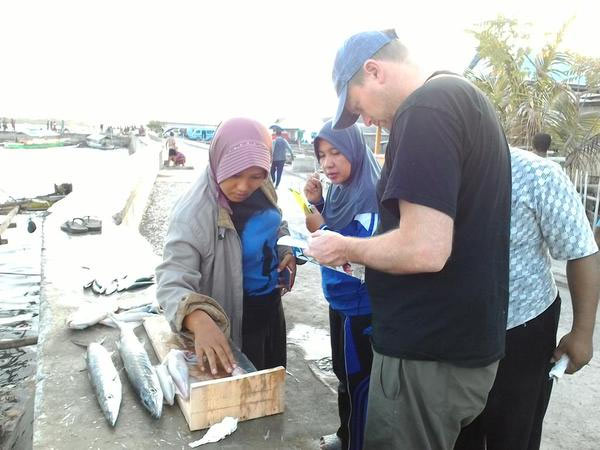
Indonesia is at the heart of the Coral Triangle, an area characterised by having the World’s highest marine biodiversity. With over 17000 islands, 51,00km2 of coral reef and at least 30000 km2 of seagrass its marine life is extensive and spectacular. But with a growing population, rapidly expanding GDP, and its status as the world’s 2nd biggest fisheries producer, the marine ecosystems of Indonesia are under increasing threat. These threats are not just critical for the economy but also for the maintenance of food security of the nation’s 250 million people. This is why we’re working on a project to help find ways to protect some of the nation’s important habitat. Over the last two weeks I’ve been privileged to experience the marine environment of Indonesia. I’ve been setting up the Indonesian node of a SE Asian wide project to examine how seagrass meadows contribute to food security in case study locations, and to determine at these sites how this security is threatened by widespread anthropogenic threats to the habitat. The work is a collaboration between Cardiff University, Swansea University and a series of local partners in Indonesia, Cambodia, Sri Lanka and the Philippines. In Indonesia we have some fantastic collaborators who are helping us run great projects in Selayar and the Wakatobi, two areas of South Sulawesi. Dr Rohani Abbo Rappe, Prof Jamal Jompa and Dr Yayu LaNafie are our partners at Universitas Hasanuddin in Makassar for the work in Selayar. This is where my recent trip focussed its attention. Rohani and Yayu are both seagrass researchers widely experienced in the ecology of Indonesian seagrass meadows and have just completed annual seagrass assessments in Selayar for the CoreMap CTI programme. Research trips to Indonesia seldom start easily, I spent my first few days in the worsening smog of Jakarta arranging a research visa with the help of an old colleague of mine SteveO from my Opwall days. Jakarta is interesting, but it’s crazy, and not my kind of place, I spent two evenings trying to observe the Blood Red Moon, but got thoroughly defeated by the thick smog of Java. Fortunately the visa process was smooth, and the Indonesian research department granted me a Kitas visa quite rapidly. I was then off to Makassar and then onto Selayar to spend time developing our new project with researchers at UNHAS. Selayar is the main island of the Selayar islands archipelago, it is bordered on the west by extensive fringing reefs, mangroves and seagrasses that create an enormous potential fishing area. The east of the island is highly exposed and the sea floor rapidly descends to deep waters. On the western side we met with a great team of research assistants assembled by UNHAS to help run the field work for the project. I was supplied with a host of fabulous local food as we held a series of training sessions teaching team members how to conduct quantitative fisheries landings surveys, run household interviews and lead focus group discussions with community groups. This involved lots of early very mornings heading down to the fish landing docks after the local morning call to prayer. We surveyed a series of lift nets boats, fish fence landings and gill net landings in addition to some line fishing boats and some trap fishers. Although the pelagic fish landings of anchovy caught with large light based lift nets were huge, the landings from the seagrass based fisheries (gill nets, traps and fish fences (sero)) were all poor. Lots of juvenile fish, discards and poor CPUE. Fish landings from the shallow water seagrass fisheries of Selayar were poor. We can only hope that this is a seasonal phenomenon. Our trial interviews started to reveal a coastal seascape under widespread threat and increasing pressure. Many people described declining catches, loss of seagrass, changes in species catch and a general deterioration of the marine environment. The seagrasses of Selayar were formerly the main point of spat collection for the region for extensive Prawns and Milkfish aquaculture, but these are no longer present. We also heard descriptions of the disappearance of otters, formerly seen in seagrass collecting Urchins. Seagrass meadows of Selayar contain up to 11 species and are dominated by Enhalus acoroides and Thalassia hemprichii. It was nice to hear many references to recent dugong sightings but overall I felt that the marine environment of Selayar was in need of help. Our suspicions were confirmed as we set about collecting BRUV data of motile fauna in seagrass up and down the coast. Although we saw a large Barramundi and few large shoals of Rabbitfish, the seagrasses did not contain an abundance of fish, suggesting a system under high exploitation pressure. Looking around the Island of Selayar it’s easy to see the vast expanse of permanent fixed gear fish fences that give fish living in the shallow waters very little chance of survival, particularly the juvenile fish that need to grow and develop to form the next generation of spawning adults. BRUV footage of octopus foraging in seagrass in Selayer, SW Sulawesi, Indonesia It was a great trip to Selayar and I left the Island feeling like we had a good research team ready to collect sound data. I also felt that our project was timely as the seagrasses of Selayar need some assistance. Selayar is an example of a site slowly losing its ecosystem resilience. Our recently published paper on this topic shows how the loss of a diverse food web and the cumulative pressures of localised disturbance and decreasing water quality mean that seagrass is more susceptible to the impacts of climate change. As we see the increasing daily impacts of a very large and intense scale El Nino event across the Indo-pacific region I hope that the seagrasses of the region will survive. Hopefully the results of our project will contribute to ensuring this survival into the future. Working with UNHAS to train local research assistants to conduct household interviews. Fantastic collaboration with researchers at Universitas Hasanuddin (UNHAS) in Makassar.
Puttalam Lagoon – Paradise Lost?
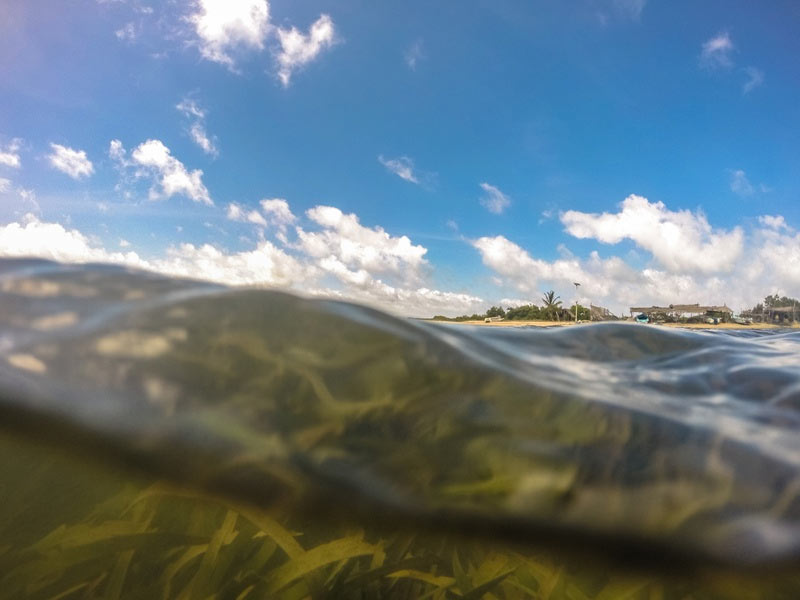
At the end of August I spent 10 days conducting fieldwork in Pattalam Lagoon, which is situated in the north west of Sri Lanka. The purpose of my visit to Puttalam Lagoon was to set up socio-economic and fish landings surveys with a research collaborator, who will now complete the surveys. This research was undertaken to contribute to a growing database covering South East Asia and beyond, linking seagrass meadows and food security, by using Sri Lanka as a case study. The lagoon was fringed with seagrass meadows and populated by many dense mangrove islands. Before the trip, I had profiled the area to gain some understanding of the people, the environment and the lagoon itself – which was once a tropical paradise. However, upon arrival I was faced with shock at the sheer size of the lagoon, measuring 327 km2, which was once surrounded by dense mangrove forests. From the onset it was clear that much of the once rich mangrove forests had been removed to make way for coconut plantations, salt production, rice cultivation and most notably shrimp farms – an industry that would be dominant throughout my findings. For the duration of my trip I was based in Kalpitiya, a relatively small, but densely packed town with a population just shy of 65,000. A large proportion of the population are refugees, whom fled Mannar in 1990’s when Tamil Tiger militants ordered them to leave or face death, and although they have lived in the area for over 20 years, many still desire to return home. Early starts. 5:30am at Oththakanna, the smaller of the two landing sites. Due to the nature of the research, which was split between landing surveys and household interviews, I was fortunate enough to spend much of my time with the large and lively fishing community where I focused on two very different landing sites. My day’s started early, meeting the fishermen at around 5:30am, just as they were returning to the landing site after collecting their catch. The first, more traditional landing site, where fishers mainly targeted shrimp, was made up of around 60 fishers and a small, coconut leaf hut, known locally as a Wardiya, was the focal point of the site and was used to weigh and sell shrimp. The second landing site was larger, fish were always the target species and had a strong community sense with a large number of older fishers helping to sort individual catches, which on some days were in excess of 400Kg. Upali ran his Wardiya very strictly, and all sales were weighed and recorded. At the smaller landing site, Oththakanna, it was clear that seagrass played an extremely important role in the fishery – “We catch more shrimp in seagrass” said Upali, the owner of the Wardiya, “Without seagrass, I would not be here”. Even though this was the case and all fishing occurred in seagrass there, the very nature of the seagrass shrimp fishery will be its downfall, with high levels of illegal fishing, most of which is damaging the seagrass. It was clear that fishing was primarily a source of income and not food, with extremely high and unregulated by-catch and fisher’s targeting shrimp only. Any shrimp that were caught were sold to a middleman whom would drive from up from Colombo, load up his ice filled truck, and then return to Colombo to prepare the shrimp for export. In some cases, over half the catch was discarded and numerous juvenile fish, including groupers, snappers and emperors, all highly valued sources of food at other case study locations, were either thrown to dogs and crows, or left on the beach. Of the by-catch species, seahorse are the only highly valued species, which can be sold to tourists for a high price. Yet the level of appreciation for seagrass, and the fishers desire to halt the use of illegal fishing gears gives some hope for the future. Catfish caught in the lagoon were mainly salted and dried – a cheaper source of protein than fresh fish. The larger landing site, Wannimundalama, was completely different with traditional non-motorised boats being replaced with more modern fibre glassed boats with outboard engines. The fishing was different too, and shrimp were no longer the target. Instead, net fishers targeted sardine, and in the majority of cases, this was all they caught. In some cases, catfish were also caught, but instead of being sold fresh, these were salted and dried. The fishing at this site was effective and a real community effort, with the men conducting the fishing, and women de-scaling and gutting the fish as soon as it was landed. Still, seagrass was appreciated for its value as a nursery area, and again fishers knew that if it was lost, they would no longer be able to fish. Although the data only displays a snapshot of the lagoon fishery, it is hoped that with continued research we can gain a deeper understanding of its complexity and begin to work with the fishers to minimise the impact their fishing is having on the seagrass meadows there. It wasn’t all doom and gloom, and I left hopeful as the fishers welcomed me into their “fishing family” and began to make an effort to return any live by catch to the sea – much to the dog’s disappointment. View more photos from Ben’s trip here.

